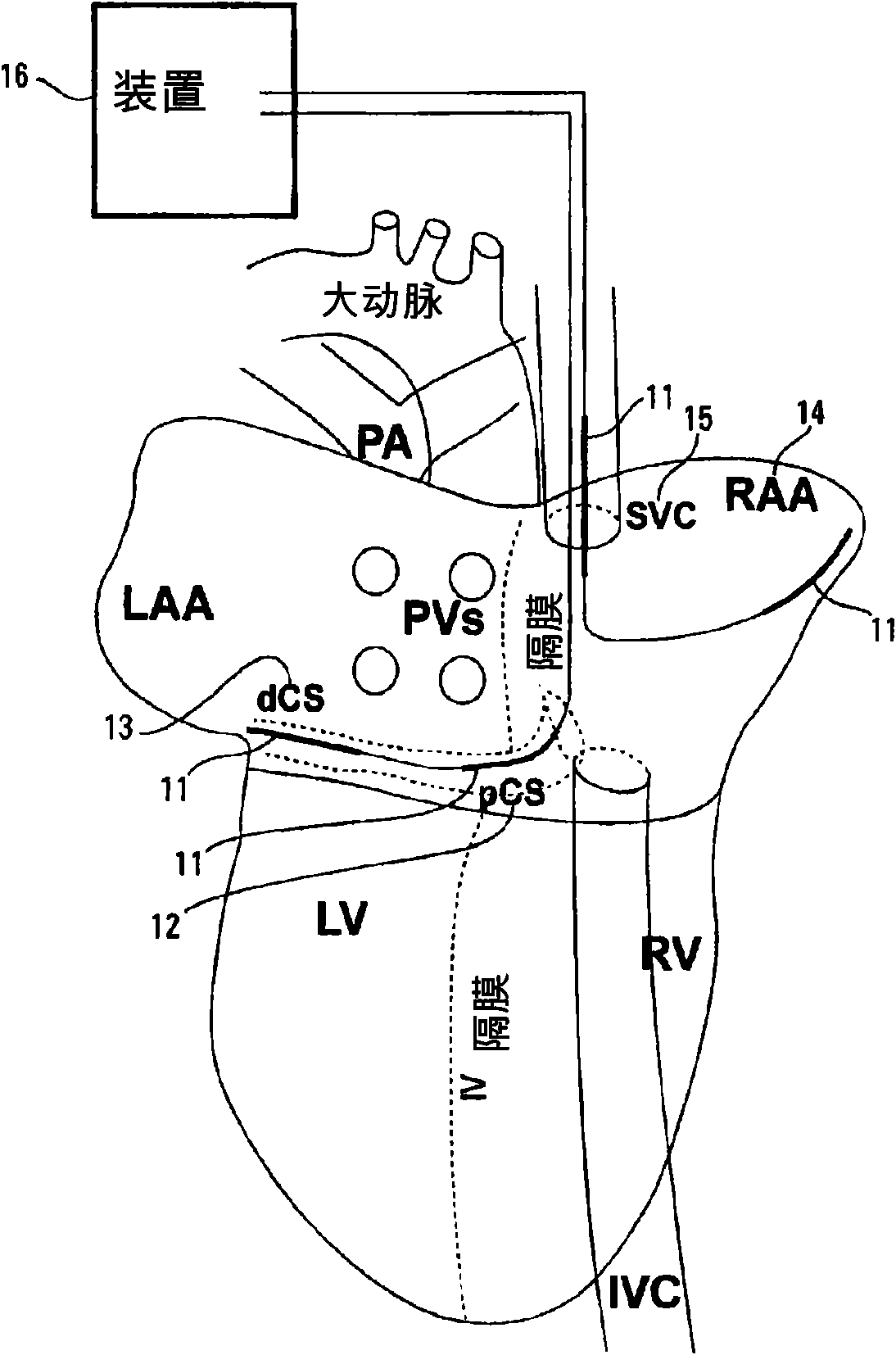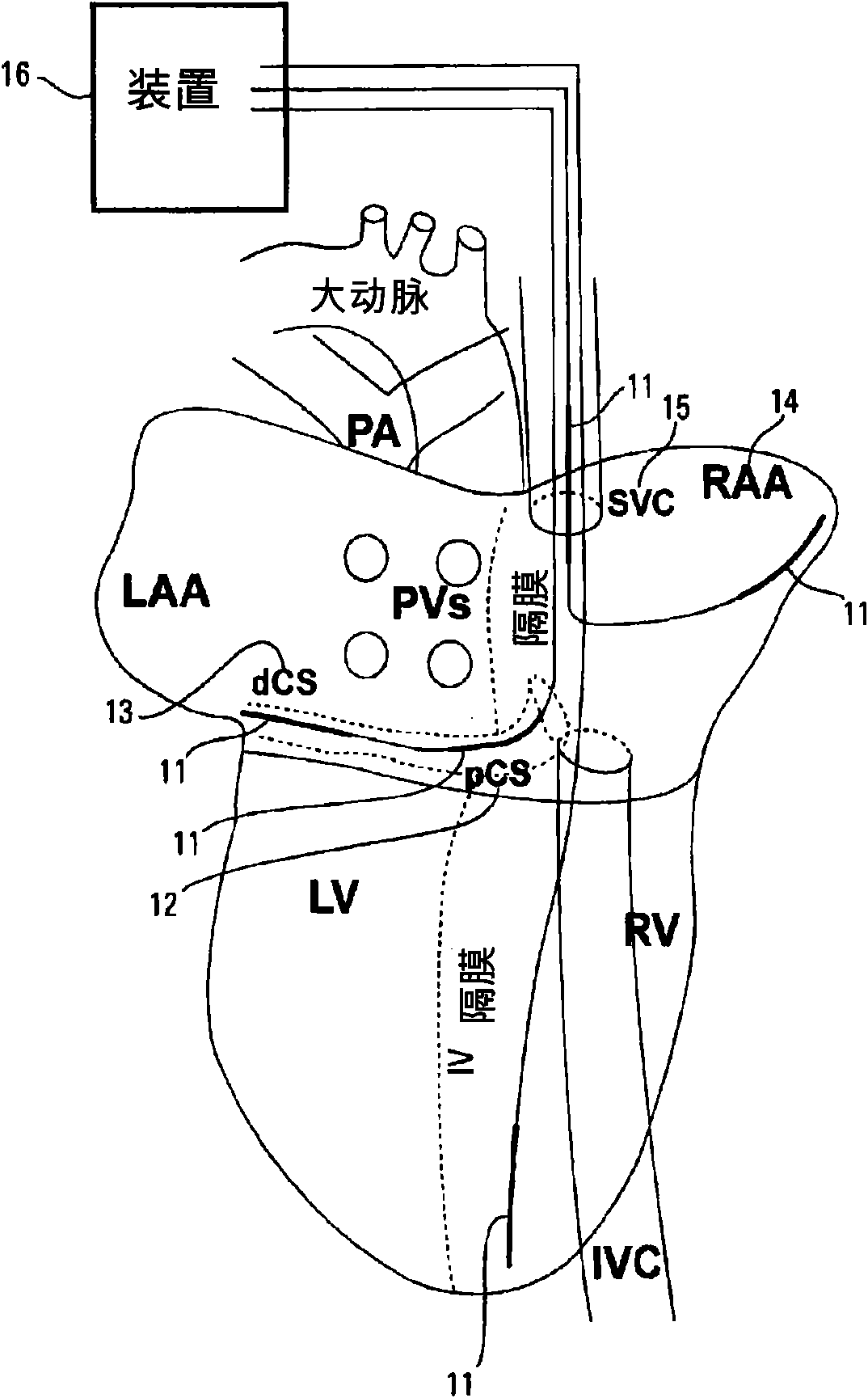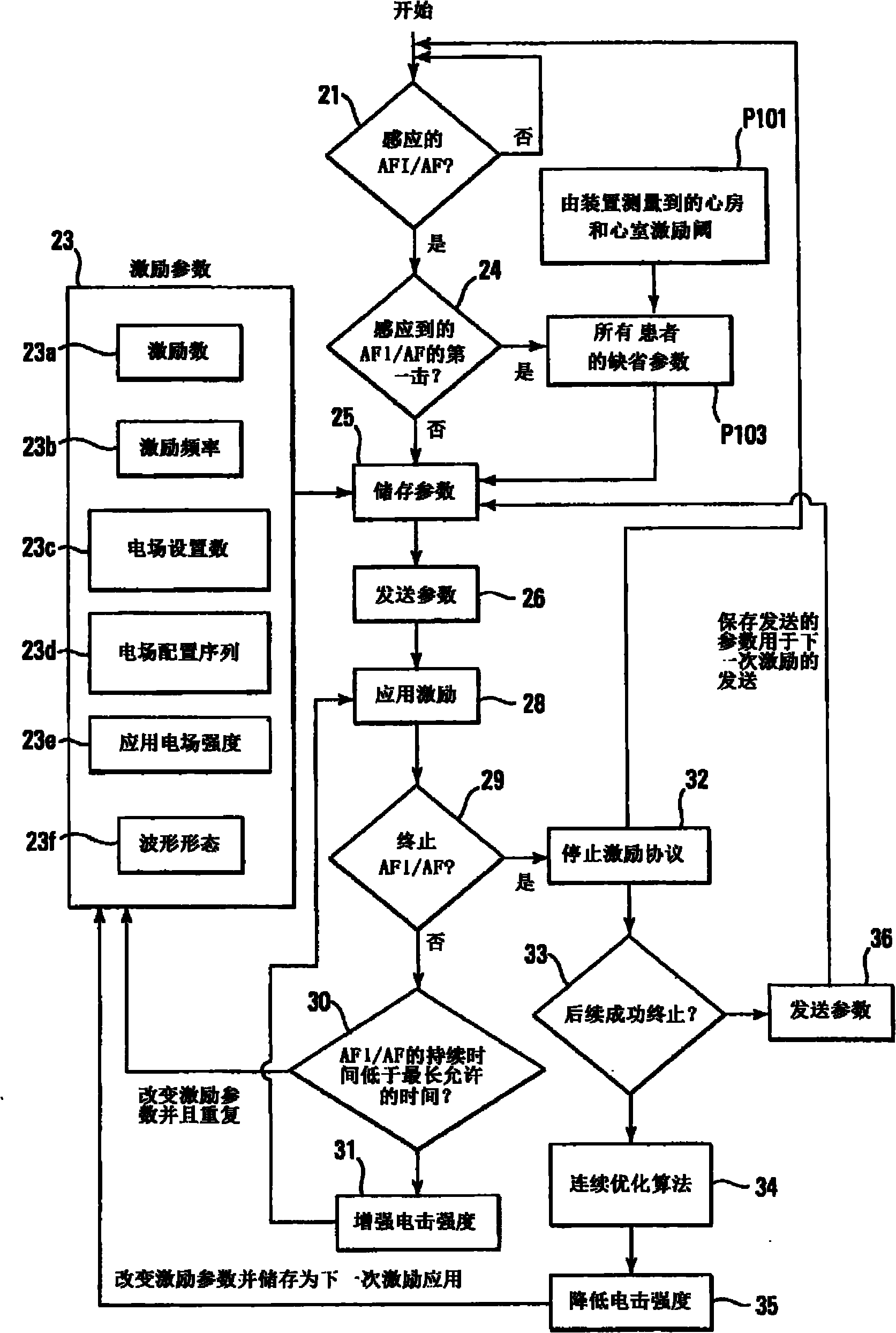Method and device for low-energy termination of atrial tachyarrhythmias
A technology for arrhythmia and treatment devices, used in electrotherapy, therapy, internal electrodes, etc., to solve problems such as energy levels exceeding pain thresholds
- Summary
- Abstract
- Description
- Claims
- Application Information
AI Technical Summary
Problems solved by technology
Method used
Image
Examples
Embodiment Construction
[0040] The defibrillation method of embodiments of the present invention is based on the delivery of virtual electrode polarization from an implantable device as a graded pull-out far-field therapy, and a method of disrupting and subsequently terminating anatomical reentry tachyarrhythmias. This method involves a low voltage shock that disrupts or terminates the core of the parent rotor that is anchored to heterogeneous myocardium, such as the vena cava region or areas of fibrosis. With this method, a defibrillation energy that is 20 times lower than traditional high-energy defibrillation can be obtained. In ventricular tachycardia, a reduction in energy from 6.1±1.0 Joules to 0.3±0.1 Joules was observed, p<0.001. Myocardial tissue anatomy is inherently heterogeneous. These averagely moderately proportioned syncytial inhomogeneities represent an important mechanism contributing to the far-field excitation process. Fishler, M.G., Vepa K. "Spatial and temporal effects of syncy...
PUM
 Login to View More
Login to View More Abstract
Description
Claims
Application Information
 Login to View More
Login to View More - R&D
- Intellectual Property
- Life Sciences
- Materials
- Tech Scout
- Unparalleled Data Quality
- Higher Quality Content
- 60% Fewer Hallucinations
Browse by: Latest US Patents, China's latest patents, Technical Efficacy Thesaurus, Application Domain, Technology Topic, Popular Technical Reports.
© 2025 PatSnap. All rights reserved.Legal|Privacy policy|Modern Slavery Act Transparency Statement|Sitemap|About US| Contact US: help@patsnap.com



